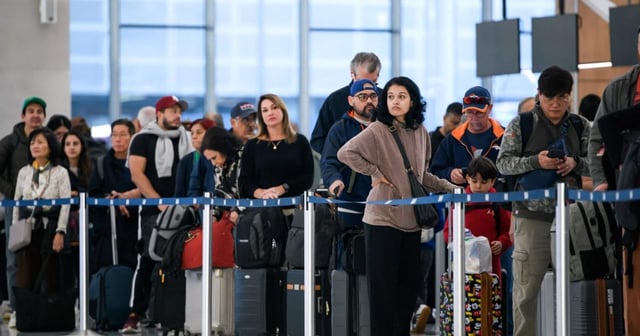It’s time to brace yourselves, travelers. The friendly skies might be getting a little less friendly, and a lot less crowded. The Federal Aviation Administration (FAA) is preparing to implement flight reductions at some of the nation’s busiest airports, a move designed to alleviate persistent delays and address critical air traffic controller staffing shortages. This isn’t just a minor adjustment; it’s a significant intervention with potentially far-reaching consequences for the airline industry and anyone planning to fly.
Why Are Flights Being Cut? The Perfect Storm
The FAA’s decision to trim flight schedules isn’t arbitrary. It’s a response to a confluence of factors that have been brewing for some time. On one hand, we have a surge in air travel demand as people eager to explore and reconnect post-pandemic have taken to the skies. Airports are buzzing, and planes are packed.
However, this surge has run headfirst into a serious problem: a shortage of qualified air traffic controllers. Years of attrition, coupled with training bottlenecks, have left the FAA struggling to maintain adequate staffing levels, especially at critical control centers. This shortage directly impacts the efficiency of air traffic flow, leading to delays, cancellations, and general passenger frustration.
Adding to the complexity is the ongoing modernization of air traffic control systems. While these upgrades are essential for long-term improvements, they can create temporary disruptions and require controllers to adapt to new technologies, further straining resources. This situation is akin to trying to renovate a house while still living in it – challenging, to say the least.
Which Airports Will Be Affected and What Can You Expect?
While the specifics of the flight reductions are still being finalized, it’s likely that major hubs experiencing the most significant delays and staffing challenges will be targeted. Think of airports like New York’s John F. Kennedy (JFK) and LaGuardia (LGA), Newark Liberty International (EWR), and potentially others that have consistently struggled with on-time performance.
What does this mean for the average traveler? Expect fewer flight options, particularly during peak hours. This could translate to increased ticket prices as demand rises and available seats become scarcer. Airlines may also consolidate flights, meaning some routes could be eliminated or have reduced frequency.
It’s also crucial to prepare for potential schedule changes and delays. Flexibility will be key. Consider booking flights earlier in the day, as delays tend to compound as the day progresses. Stay informed about your flight status and be prepared to adjust your travel plans if necessary. Travel insurance with delay coverage may also be a worthwhile investment.
The Ripple Effects: Airline Industry and the Economy
The FAA’s flight reductions won’t just impact passengers; they will have a ripple effect throughout the airline industry and potentially the broader economy. Airlines will be forced to make difficult decisions about which routes to cut and how to allocate their limited resources. This could lead to reduced competition on certain routes, potentially impacting fares.
Smaller airports and communities that rely on air service could also be disproportionately affected if airlines prioritize flights to larger, more profitable destinations. This could hinder economic development and limit travel options for residents in these areas. The reduced capacity could also put a damper on tourism and business travel, impacting industries that rely on these sectors.
Furthermore, the flight reductions could lead to increased pressure on the FAA to accelerate air traffic controller training and address the underlying causes of the staffing shortage. This situation highlights the critical importance of investing in infrastructure and human resources to ensure the continued efficiency and reliability of the air transportation system.
Looking Ahead: Solutions and Long-Term Strategies
While the FAA’s flight reductions are a necessary short-term measure, they are not a sustainable long-term solution. Addressing the air traffic controller shortage requires a multi-pronged approach that includes:
* Aggressive Recruitment and Training: The FAA needs to ramp up its recruitment efforts and streamline the training process to quickly replenish the ranks of air traffic controllers. Incentives, such as signing bonuses and relocation assistance, could help attract qualified candidates.
* Technological Advancements: Continued investment in modernizing air traffic control systems is essential. This includes implementing technologies that can automate certain tasks and improve the efficiency of air traffic flow.
* Collaboration and Communication: Close collaboration between the FAA, airlines, and other stakeholders is crucial. Open communication and data sharing can help optimize flight schedules and minimize disruptions.
* Addressing Work-Life Balance: Ensuring a healthy work-life balance for air traffic controllers is vital to prevent burnout and retain experienced professionals. This includes addressing workload concerns and providing adequate support and resources.
The FAA’s decision to cut flights is a stark reminder of the challenges facing the air transportation system. While these reductions may cause temporary inconvenience, they are a necessary step towards ensuring a safer and more reliable travel experience in the long run. By addressing the underlying causes of the delays and staffing shortages, we can work towards a future where air travel is efficient, affordable, and enjoyable for everyone.
